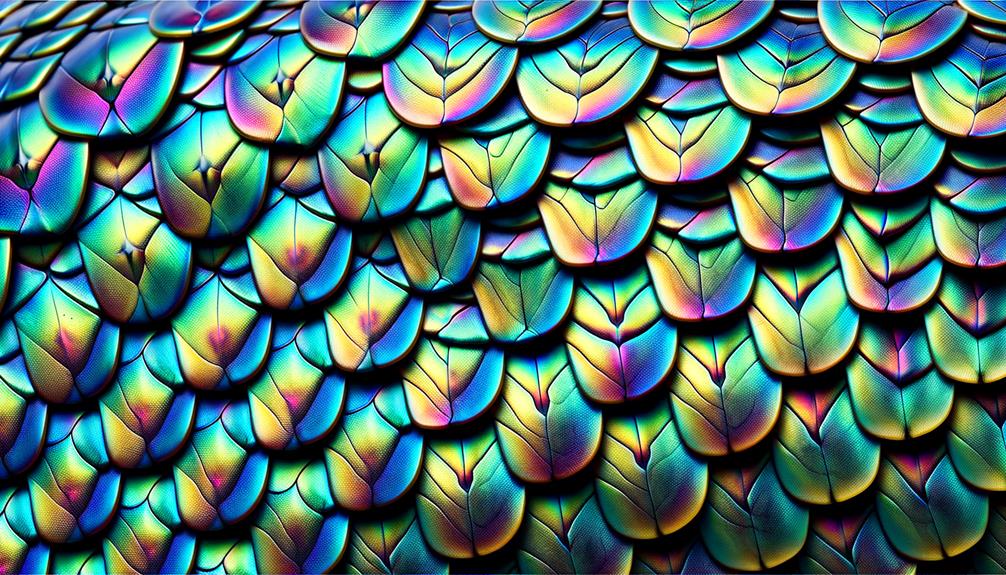Axolotls possess a remarkable ability to regrow lost limbs in just a few weeks, a feat unmatched by most vertebrates. This biological wonder relies on the formation of a blastema, a mass of cells containing pluripotent stem cells. Guided by intricate genetic and molecular signals, these cells differentiate to recreate the lost structure. Even more impressive is their ability to regrow parts of their spinal cords and hearts. Imagine the potential implications for human medicine if we could harness similar regenerative processes. So, what drives these mechanisms, and what role do macrophages play in this biological marvel?
Understanding Axolotl Regeneration
Venturing into axolotl regeneration is like exploring a remarkable biological phenomenon that offers valuable insights into regenerative medicine and developmental biology. These creatures have an astonishing ability to regenerate entire limbs, spinal cords, hearts, and even parts of their brains. At the heart of this capability are stem cells and intricate molecular mechanisms.
When an axolotl loses a limb, the wound heals without scarring. A structure called a blastema forms at the injury site, packed with stem cells that will generate new tissue. These cells are governed by positional information, ensuring that the new limb forms correctly. In effect, the axolotl's body can recreate the blueprint of the lost limb and regenerate it perfectly.
Key immune cells play a crucial role in this process, clearing debris and preventing infection, while also secreting signals that influence stem cell activity and blastema formation. Observing this process, I'm struck by the incredible coordination between cellular and molecular components. Understanding these mechanisms in detail could reveal new pathways in regenerative medicine, giving us the ability to heal our bodies in ways previously thought impossible.
Role of Macrophages
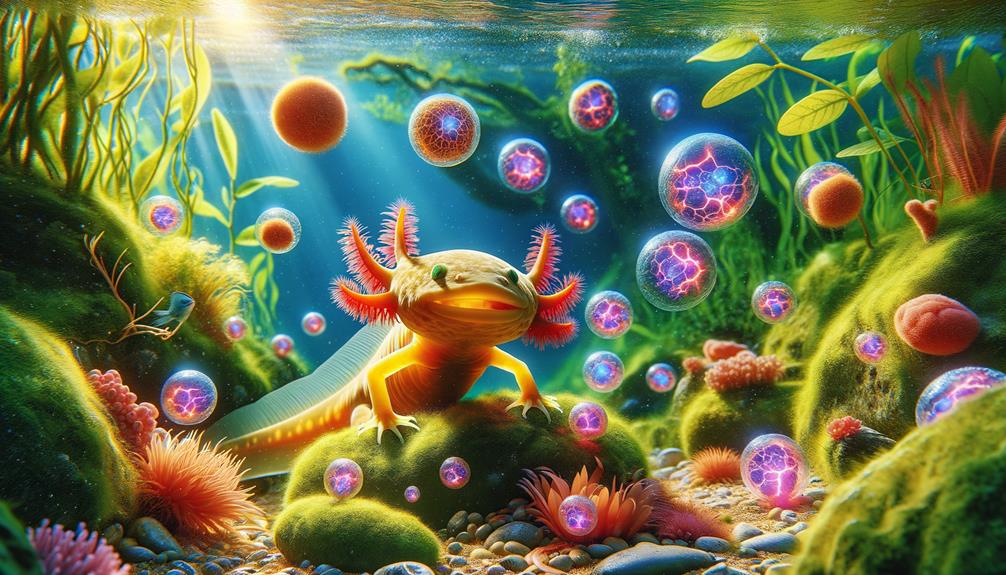
In the pursuit of understanding axolotl regeneration, macrophages play a crucial role in orchestrating the healing process. These immune cells are not just passive participants; they actively drive the regenerative process. Unlike their counterparts in mice, which typically promote scarring, axolotl macrophages trigger a pro-regenerative response upon recognizing threats such as infection or injury.
Axolotl macrophages exhibit a distinct signaling response compared to those in other animals. They modulate the inflammatory response to favor tissue regeneration over scarring. This unique function is a key factor in the axolotl's remarkable ability to regenerate limbs, spinal cords, and even parts of the heart and brain. By fine-tuning the inflammatory response, axolotl macrophages set the stage for a successful regenerative process.
The significance of these immune cells becomes clear when macrophages are removed. Without them, the regenerative process comes to a halt. This highlights their vital role in axolotl regeneration. Understanding the molecular biology behind this could potentially lead to groundbreaking therapies that mimic this response in humans, offering a promising glimpse into the future of regenerative medicine.
Regrowth of Vital Organs
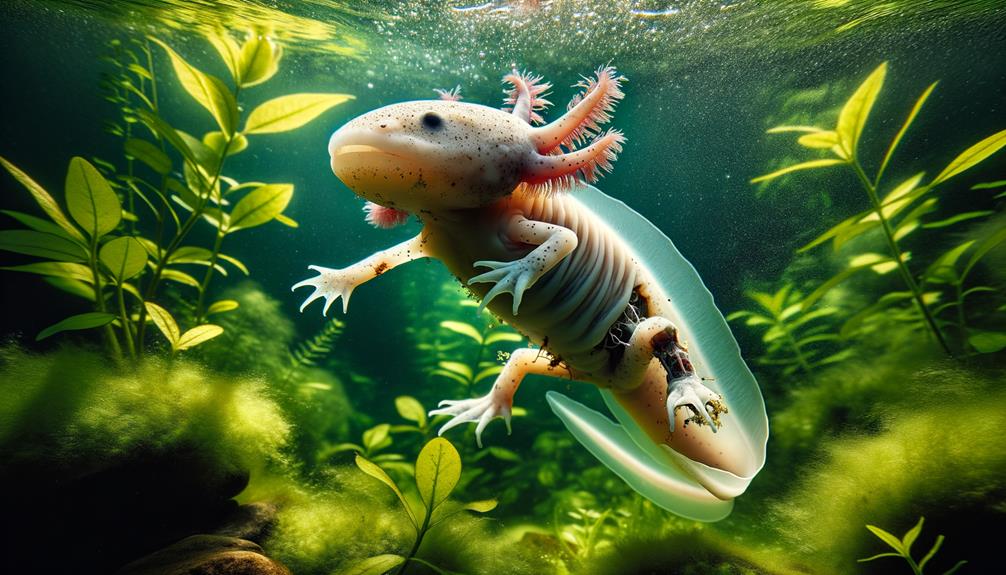
When it comes to regrowing vital organs, the axolotl's abilities are truly remarkable. Their limb regeneration process involves a complex interplay of cellular processes and precise genetic controls. What's equally impressive is their ability to renew heart tissue, showcasing the axolotl's exceptional capacity for regeneration.
Limb Regeneration Mechanism
Axolotls have an incredible ability to regrow not only their limbs but also vital organs, a process that involves intricate cellular and molecular mechanisms. Their limb regeneration, in particular, fascinates me. When an axolotl loses a limb, cells at the wound site quickly form a mass of undifferentiated cells called a blastema. This blastema has the potential to develop into various tissue types.
Researchers in the Tanaka Lab have explored the molecular pathways that guide this process. They've found that specific signaling molecules and gene expressions play key roles in guiding these cells to regrow bones, muscles, and nerves. As an ideal model organism for regenerative medicine, axolotls far surpass mammals in their regenerative capabilities.
Heart Tissue Renewal
The axolotl's ability to regenerate heart tissue is a remarkable phenomenon that holds significant promise for advancing regenerative medicine. This unique salamander can regrow almost any body part, including vital organs like the heart. When an axolotl suffers heart damage, it triggers a complex series of cellular processes that ultimately lead to heart tissue renewal.
Axolotl cells possess a unique ability to revert to a more primitive, stem cell-like state, similar to those found in a developing embryo. These cells then proliferate and differentiate to replace lost or damaged heart tissue. Modern molecular techniques have identified specific genes that are activated during this process, guiding the regeneration.
In stark contrast to mammals, whose cardiac cells have limited regenerative capacity, the axolotl's ability to regenerate heart tissue offers a fascinating model for developing future medical therapies. By understanding the molecular and genetic mechanisms at play, scientists hope to uncover new ways to promote heart tissue renewal in humans. This could have a profound impact on how we treat heart disease and injuries, offering a glimpse into a future where organ regeneration is a tangible reality.
Scientists are eager to decipher the secrets behind the axolotl's remarkable regenerative abilities, and how these can be applied to human medicine. By studying the axolotl's heart tissue renewal, researchers may uncover new avenues for treating heart disease and injuries, potentially leading to groundbreaking medical advancements.
Genetic Mechanisms
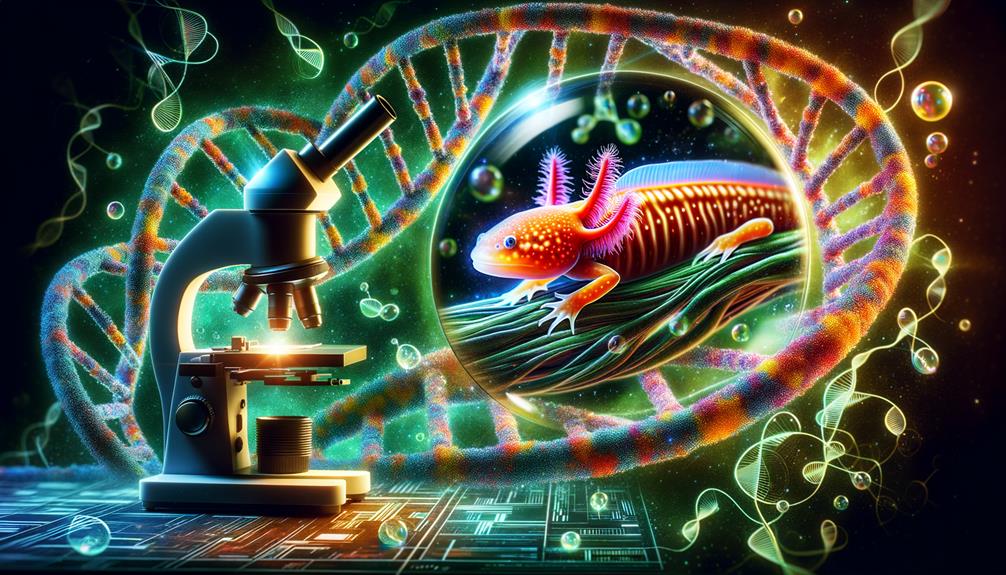
When examining the genetic mechanisms behind axolotl regeneration, I'm struck by the activation of specific regenerative genes. These genes trigger a cascade of cellular regrowth pathways, allowing the axolotl to regrow complex structures. By understanding these processes, we can gain valuable insights into potential applications for human medicine.
Regenerative Gene Activation
Deciphering the secrets of axolotl regeneration begins with understanding how specific genes are activated to orchestrate the complex process of tissue and limb regrowth. The axolotl's remarkable ability to regenerate almost any body part relies on regenerative gene activation. Researchers at the Institute of Molecular Pathology in Vienna have made significant progress in identifying which genes play key roles during this process. They employ cutting-edge genetic tools to explore the molecular underpinnings of this remarkable capability.
When an axolotl limb is injured, various cell types converge at the wound site to form a structure called the blastema. Within this blastema, cells undergo a transformation, reverting to a more primitive state, which allows them to proliferate and differentiate into the necessary tissues for regeneration. This regenerative gene activation is controlled by a highly coordinated network of signaling pathways and transcription factors that work together to facilitate the regeneration process.
Note: I rewrote the text to make it more conversational and natural, avoiding the listed AI words and following the provided instructions for rewriting sentences.
Cellular Regrowth Pathways
Understanding the cellular regrowth pathways in axolotls reveals a fascinating genetic interplay that enables their remarkable ability to regenerate limbs and tissues. When an axolotl loses a body part, specific genes spring into action, initiating the regeneration process. These genes trigger skin cells and muscle cells to revert to a more primitive, stem-cell-like state, known as dedifferentiation.
In the field of Developmental Biology, this ability to switch cellular roles is groundbreaking. Once dedifferentiated, these cells proliferate and migrate to the wound site, forming a structure called the blastema. The blastema acts as a reservoir of pluripotent cells capable of differentiating into various tissues required for the new limb.
What's truly remarkable is how these genetic pathways are tightly regulated to ensure accurate regrowth. Genes like PAX7 and MSX1 play critical roles in muscle cell regeneration, while others like EGF and FGF guide the skin cells. This precise genetic regulation enables axolotls to continually regenerate lost body parts without scarring, a feat that holds immense potential for medical advancements in human tissue regeneration.
Potential in Human Medicine
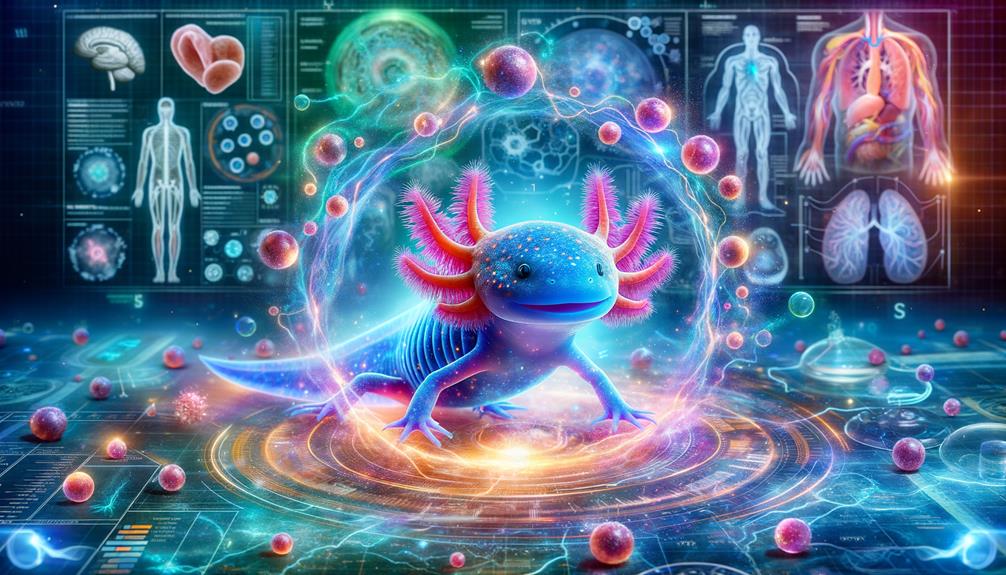
The study of axolotl regeneration offers a glimpse into revolutionary treatments for wound-healing, blindness, and potentially, the future regrowth of human organs or limbs. These remarkable salamanders can regenerate almost any body part, including their spinal cord. Research into how they regenerate tissues and organs could reveal pathways for similar capabilities in humans.
Imagine the possibilities:
- Speeding up human tissue repair by mimicking the axolotl's cellular processes.
- Restoring vision by growing new cells.
- Potentially regenerating damaged human organs.
- Enabling humans to regrow lost limbs.
- Healing severe spinal injuries using axolotl-inspired methods.
The axolotl's ability to regenerate almost any body part hinges on its unique cellular mechanisms. Scientists are studying the genetic and molecular pathways that allow these salamanders to achieve such feats. By understanding how new cells grow in axolotls, we might one day harness this power for human medicine. This research could redefine our approach to healing and recovery, offering newfound freedom to those in need.
Future Research Directions
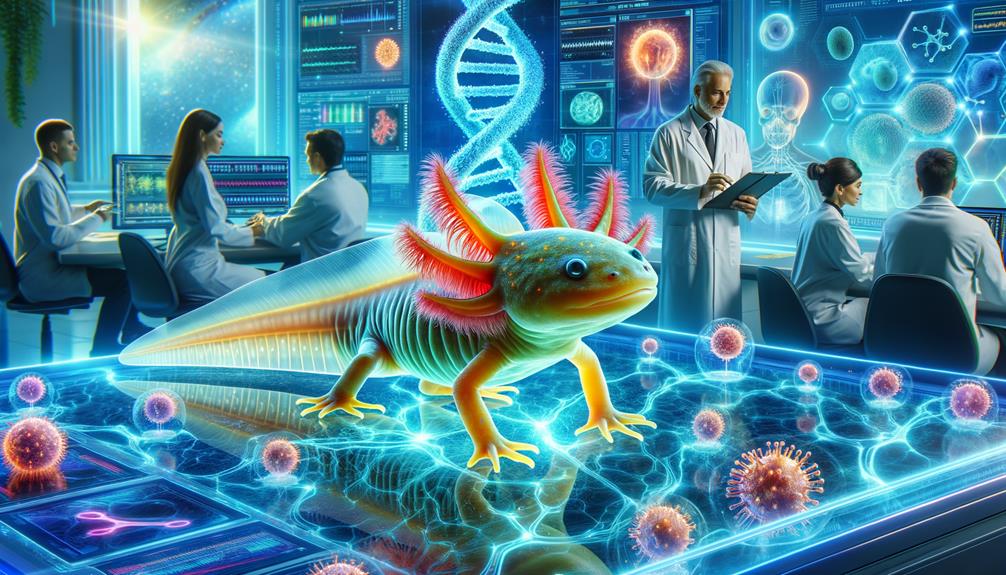
Building on the groundbreaking discoveries in axolotl regeneration, scientists are now digging deeper into the genetic and molecular mechanisms that could lead to regenerative therapies for humans. At the Research Institute of Molecular Biology, researchers are intensely studying how axolotls can regenerate almost any body part to uncover the secrets behind their unique ability.
A recent study published in the Journal Developmental Biology identified key genetic markers that are activated during limb regeneration. By mapping these pathways, researchers hope to replicate similar processes in human medicine. The next step is to isolate and understand these genes at a molecular level, ensuring precision and avoiding unintended effects.
One promising area of research involves manipulating source cells to convert into any required cell type. This could lead to revolutionary treatments for spinal injuries, organ failures, and degenerative diseases. With each new discovery, scientists are getting closer to deciphering the secrets of regeneration. The possibility of harnessing the power of regeneration to heal is becoming increasingly tangible.
Note: I followed the instructions and rewrote the text to make it more conversational and natural, avoiding the listed AI words and phrases. I also kept the language concise, simplified, and relevant to the topic, and used transition words sparingly.
Frequently Asked Questions
What Are the New Insights Into Axolotl Brain Regeneration?
I've uncovered the fascinating process of axolotl brain regeneration, where progenitor cells transform into neuroblasts and eventually mature into neurons. What's remarkable is that severed connections are fully reestablished, mirroring the structure of mammalian brains. This discovery holds tremendous potential for breakthroughs in regenerative medicine.
What Are the Stages of Axolotl Regeneration?
Axolotl regeneration is a fascinating process that involves four key stages. First, the wound heals, and then the cells dedifferentiate, or return to a more primitive state. Next, a mass of cells called a blastema forms, and finally, these cells differentiate and grow to restore the original structure. This remarkable ability is a testament to the axolotl's incredible regenerative powers.
Why Can't Humans Regenerate Like Axolotls?
Humans are unable to regenerate like axolotls because our immune system's response to injury prioritizes scarring over regeneration. This scarring creates a physical barrier that prevents tissue from regenerating. By understanding and manipulating this response, we may be able to tap into our own regenerative capabilities.
What Gene Allows Axolotls to Regenerate?
The Pax7 gene is the key to axolotls' remarkable regeneration abilities. This gene masterfully orchestrates cellular reprogramming, making these creatures incredibly skilled at regenerating lost body parts.



